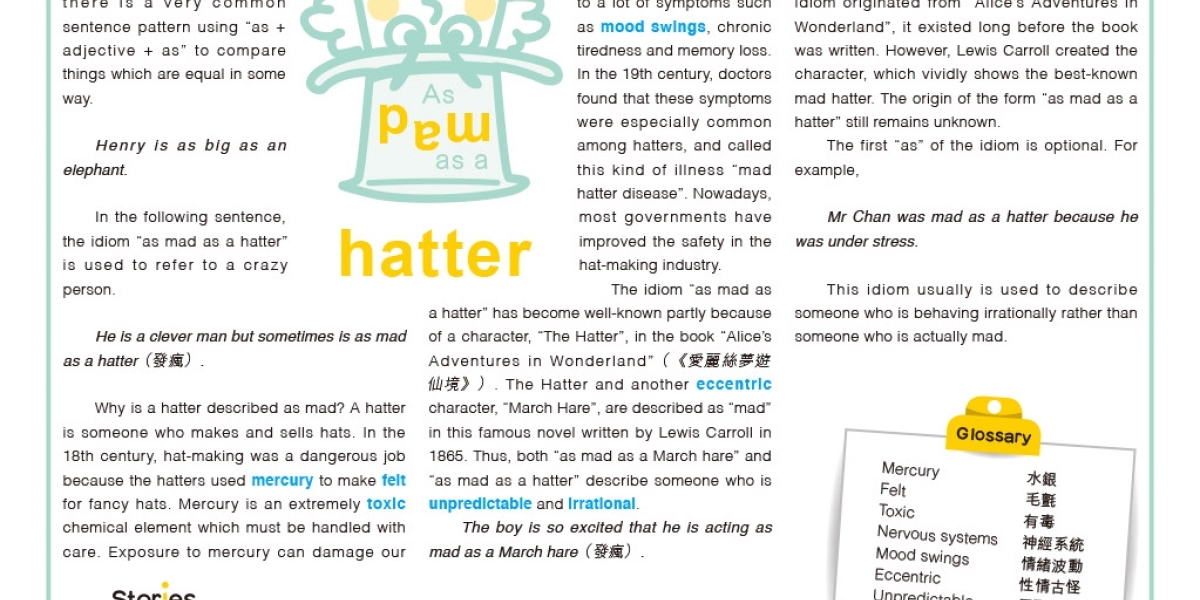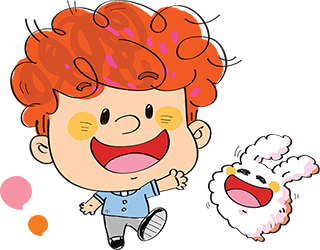
As mad as a hatter
In the English language, there is a very common sentence pattern using “as + adjective + as” to compare things which are equal in some way.
Henry is as big as an elephant.
In the following sentence, the idiom “as mad as a hatter” is used to refer to a crazy person.
He is a clever man but sometimes is as mad as a hatter(發瘋).
Why is a hatter described as mad? A hatter is someone who makes and sells hats. In the 18th century, hat-making was a dangerous job because the hatters used mercury to make felt for fancy hats. Mercury is an extremely toxic chemical element which must be handled with care. Exposure to mercury can damage our nervous systems, leading to a lot of symptoms such as mood swings, chronic tiredness and memory loss. In the 19th century, doctors found that these symptoms were especially common among hatters, and called this kind of illness “mad hatter disease”. Nowadays, most governments have improved the safety in the hat-making industry.
The idiom “as mad as a hatter” has become well-known partly because of a character, “The Hatter”, in the book “Alice’s Adventures in Wonderland”(《愛麗絲夢遊仙境》). The Hatter and another eccentric character, “March Hare”, are described as “mad” in this famous novel written by Lewis Carroll in 1865. Thus, both “as mad as a March hare” and “as mad as a hatter” describe someone who is unpredictable and irrational.
The boy is so excited that he is acting as mad as a March hare(發瘋).
While a lot of people think that the idiom originated from “Alice’s Adventures in Wonderland”, it existed long before the book was written. However, Lewis Carroll created the character, which vividly shows the best-known mad hatter. The origin of the form “as mad as a hatter” still remains unknown.
The first “as” of the idiom is optional. For example,
Mr Chan was mad as a hatter because he was under stress.
This idiom usually is used to describe someone who is behaving irrationally rather than someone who is actually mad.






